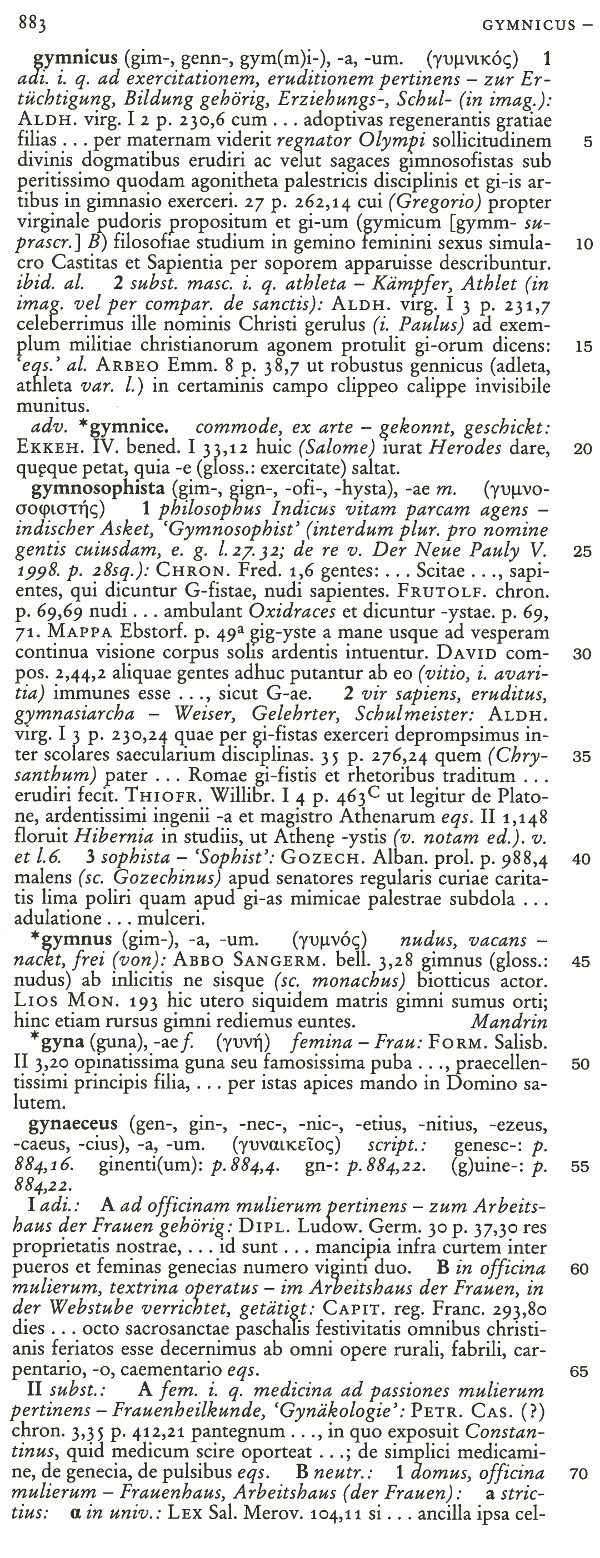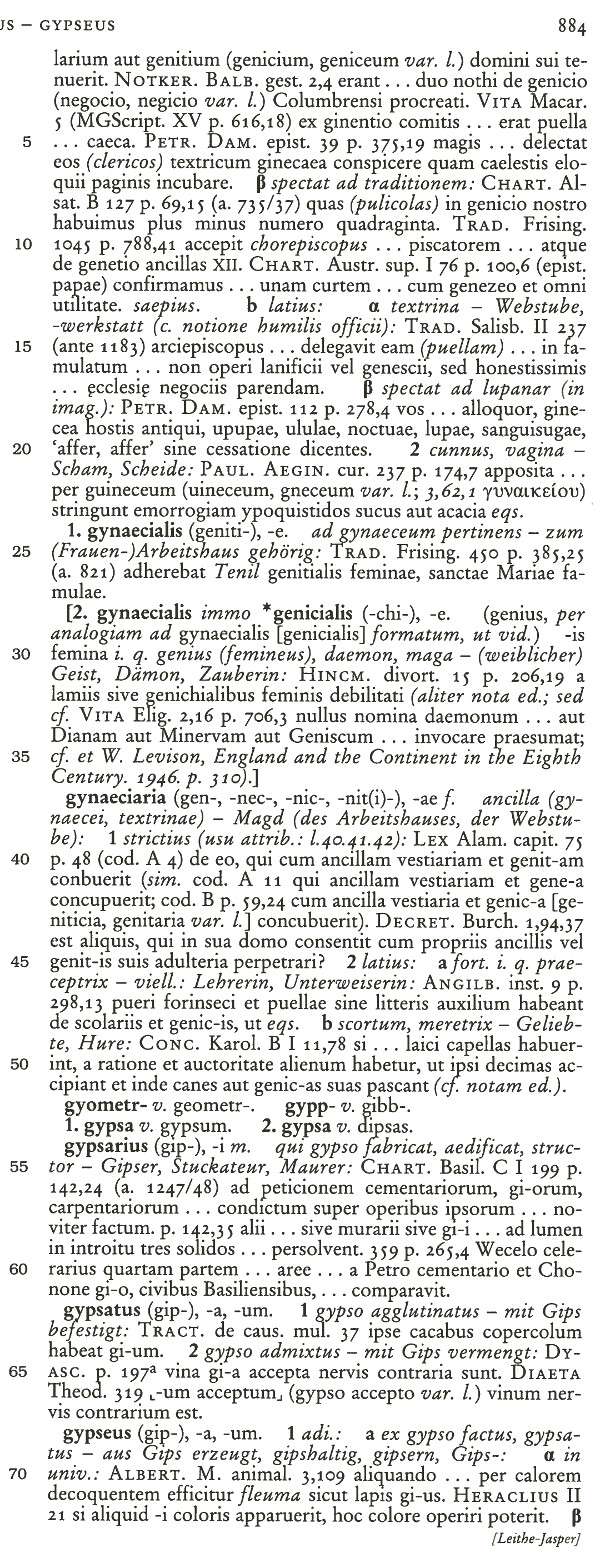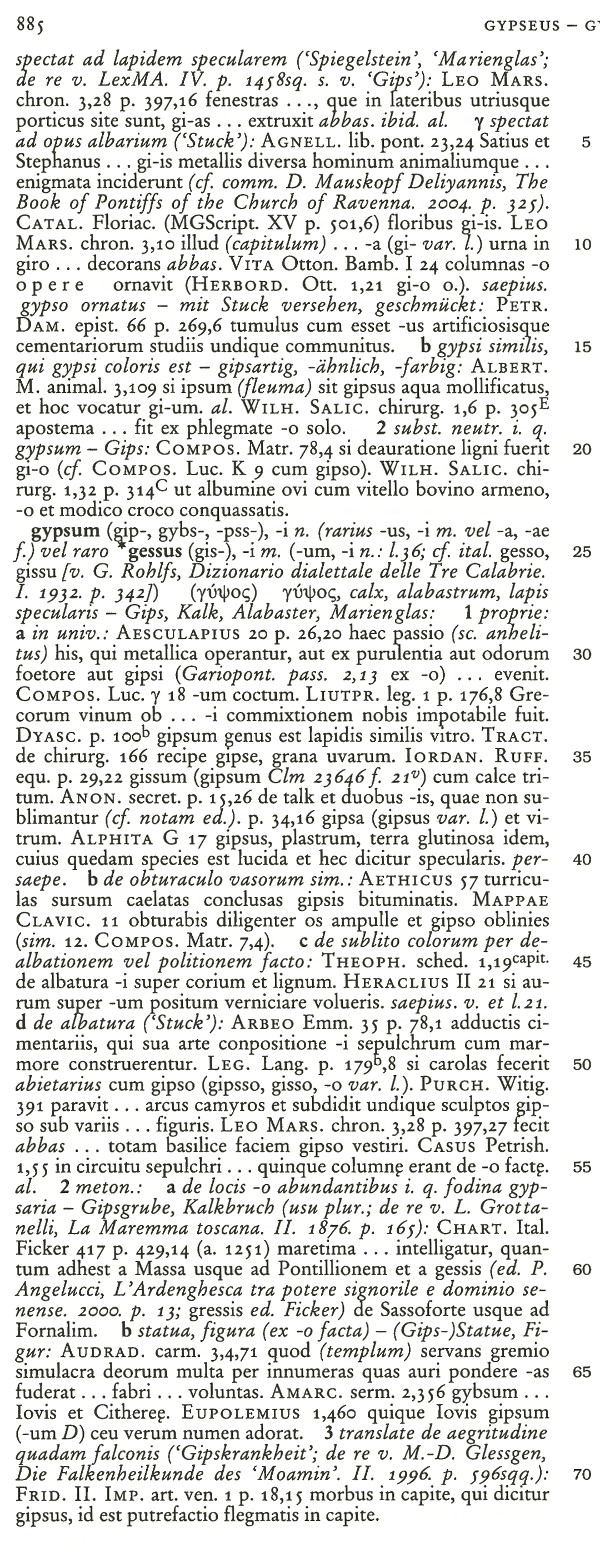
Contrary to the strict alphabetical order, adverbs are placed as sublemmata right below their associated adjective. Other possible sublemmata, e.g. nominalised participles are placed right below their associated verb.
Latin and German interpretaments translate the lemma’s respective meanings.
Lemmata not contained in the Thesaurus linguae Latinae, are preceded by an asterisk in order to mark them as medieval neologisms.
The origin of medieval neologisms and Greek loanwords will be referred to in parentheses.
The origin of medieval neologisms and Greek loanwords will be referred to in parentheses.
The bold headword entry shows the lemma’s basic form, followed by items of declination or conjugation as well as gender. The head informs on deviations from the norm. Furthermore, it may also contain references to anomalies in prosody, syntax and use of the lemma.
The German interpretament is placed within check marks if it is derived from the Latin lemma or, like in this case, derived from the underlying Graecum.
The footer indicates the name of the respective article section’s author. The name is also indicated below the last article of a complete group of articles.
Headword entry with spelling variants
Important text variants and text transmissions are documented by references to manuscripts.
Deviating readings are indicated with var. l. in parentheses.

Shorter and infrequently cited texts not contained in the Medieval Latin Dictionary’s lists of sources and abbreviations, are cited with a reference to the respective edition used.
The first citation of a section is dated if it derives from a citation title summarising texts of quite differing times of origin. This occurs a.o. with document volumes.
Homonym word forms or lemmata are differentiated by ordinal numbers.
Lemmata or occurrences which would have been better placed in an earlier section of the alphabeth, are indicated as addendum in bold square brackets.
References of various similar forms to their associated respective lemmata can be summarised in a collective reference.
The footer indicates the name of the respective article section’s author. The name is also indicated below the last article of a complete group of articles.

Multiple instances of sentential connectives can be written in spaced characters. Additional occurrences for the sentential connective in spaced characters are indicated in abbreviated form within parentheses.
Does a lemma occur in significantly differing base forms, multiple wordforms can be placed in a so called dual entry.
Occasionally, there are references made to Greek interpretaments, especially in the case of primary words without any Latin equivalent.
Deviating readings are indicated with var. l. in parentheses.
References to secondary literature are indicated in parentheses.
